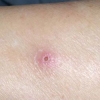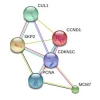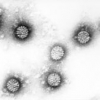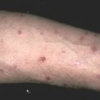Inibizione del proteosoma come nuovo meccanismo di attività proapoptotica dell'inibitore I della γ-secretasi, nel linfoma cutaneo a cellule T
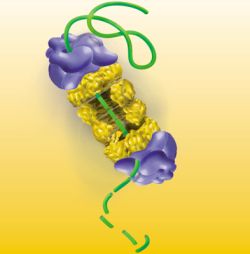 Abbiamo precedentemente scoperto che Notch1 è espresso sulle cellule T maligne del linfoma cutaneo a cellule T (CTCL), ed è necessario per la sopravvivenza delle linee cellulari CTCL. Notch può essere inibito dagli inibitori della γ-secretasi (GSIs), che differiscono ampiamente nella loro capacità di indurre apoptosi in CTCL.
Abbiamo precedentemente scoperto che Notch1 è espresso sulle cellule T maligne del linfoma cutaneo a cellule T (CTCL), ed è necessario per la sopravvivenza delle linee cellulari CTCL. Notch può essere inibito dagli inibitori della γ-secretasi (GSIs), che differiscono ampiamente nella loro capacità di indurre apoptosi in CTCL.
Obiettivi: Indagare se GSI-I, oltre ad inibire Notch, induce anche l'apoptosi in CTCL tramite l'inibizione del proteosoma, visto che GSI-I è molto potente e ha una somiglianza strutturale con l'inibitore del proteasoma MG-132.
Metodi: Le linee cellulari derivate da CTCL (MyLa, SeAx, JK, Mac1 e Mac2a) sono state trattate con GSI-I e con altri due inibitori del proteasoma (MG-132 e bortezomib). Sono stati misurati gli effetti sulla vitalità cellulare, l'apoptosi e l'attività del proteasoma, ma anche l'impatto nel favorire la sopravvivenza da parte della via di segnalazione del fattore nucleare kB (NF-kB).
Risultati: In CTCL, GSI-I ha avuto un'attività bloccante il proteasoma con un'efficacia paragonabile a quella degli inibitori del proteasoma MG-132 e bortezomib. L'inibizione del proteasoma è il principale meccanismo responsabile della morte cellulare indotta da GSI-I, così come il tiron, un composto noto per invertire l'effetto di MG-132, ha ripristinato l'attività del proteasoma e ha largamente impedito l'effetto citotossico di GSI-I. Sebbene l'inattivazione di NF-kB è un importante meccanismo di azione per gli inibitori del proteasoma, abbiamo comunque osservato un'apparente attivazione di NF-kB. Inoltre, abbiamo dimostrato che, mentre la proteina oncosoppressore p53 è stata indotta durante l'inibizione del proteosoma, essa è superflua per l'apoptosi di CTCL, così come le cellule SeAx che proteggono dalle mutazioni di p53 (le quali attenuerebbero le capacità apoptotiche), che come le cellule HuT-78 che hanno una delezione sul gene di p53, dimostrando nel complesso una potente risposta apoptotica.
Conclusioni: GSI-I rappresenta un farmaco interessante con un duplice meccanismo d'azione che comprende l'inibizione sia di Notch che del proteasoma.
Storia della pubblicazione:
Titolo: Proteasome inhibition as a novel mechanism of the proapoptotic activity of γ-secretase inhibitor I in cutaneous T-cell lymphoma
Rivista: British Journal of Dermatology. doi: 10.1111/bjd.12071
Autori: E. Biskup, M.R. Kamstrup, V. Manfé, R. Gniadecki
Affiliazioni:Department of Dermatology, Bispebjerg Hospital, University of Copenhagen, Bispebjerg Bakke , Copenhagen-, Denmark
Abstract:
Background We have previously discovered that Notch1 is expressed on malignant T cells in cutaneous T-cell lymphoma (CTCL), and is required for survival of CTCL cell lines. Notch can be inhibited by γ-secretase inhibitors (GSIs), which differ widely in their ability to induce apoptosis in CTCL. Objectives To investigate whether GSI-I, in addition to inhibiting Notch, induces apoptosis in CTCL by proteasome inhibition, as GSI-I is very potent and has structural similarity to the proteasome inhibitor MG-132. Methods Cell lines derived from CTCL (MyLa, SeAx, JK, Mac1 and Mac2a) were treated with GSI-I and two other proteasome inhibitors (MG-132 and bortezomib). The effects on cell viability, apoptosis and proteasome activity were measured, as was the impact on the prosurvival, nuclear factor κB (NF-κB) pathway. Results In CTCL, GSI-I had proteasome-blocking activity with a potency comparable to the proteasome inhibitors MG-132 and bortezomib. Proteasome inhibition was the main mechanism responsible for GSI-I-induced cell death, as tiron, a compound known to reverse the effect of MG-132, restored proteasome activity and largely abrogated the cytotoxic effect of GSI-I. Although inactivation of NF-κB is an important mechanism of action for proteasome inhibitors, we demonstrated an apparent activation of NF-κB. Furthermore, we showed that while the tumour suppressor protein p53 was induced during proteasome inhibition, it was dispensable for CTCL apoptosis, as both SeAx cells, which harbour p53 mutations that attenuate the apoptotic capacity, and HuT-78 cells, which have a deleted p53 gene, demonstrated potent apoptotic response. Conclusions GSI-I represents an interesting drug with a dual mechanism of action comprising inhibition of both Notch and the proteasome.

